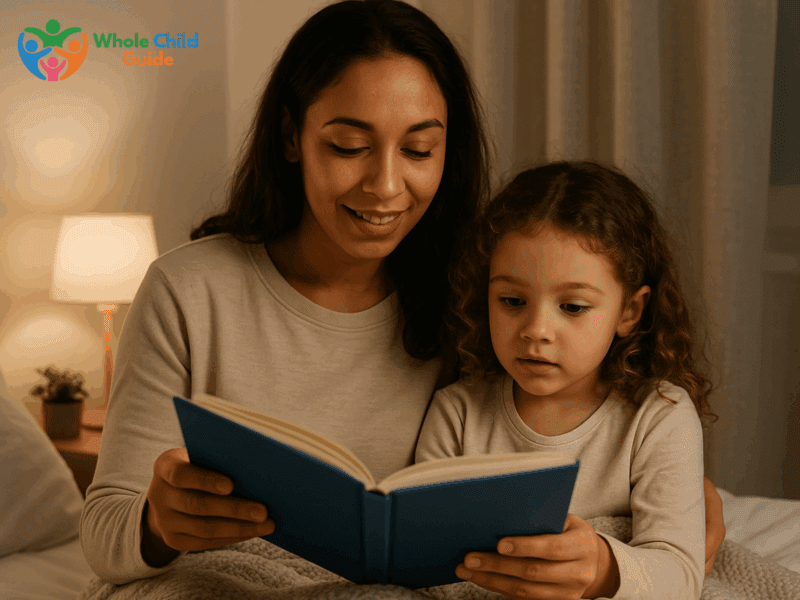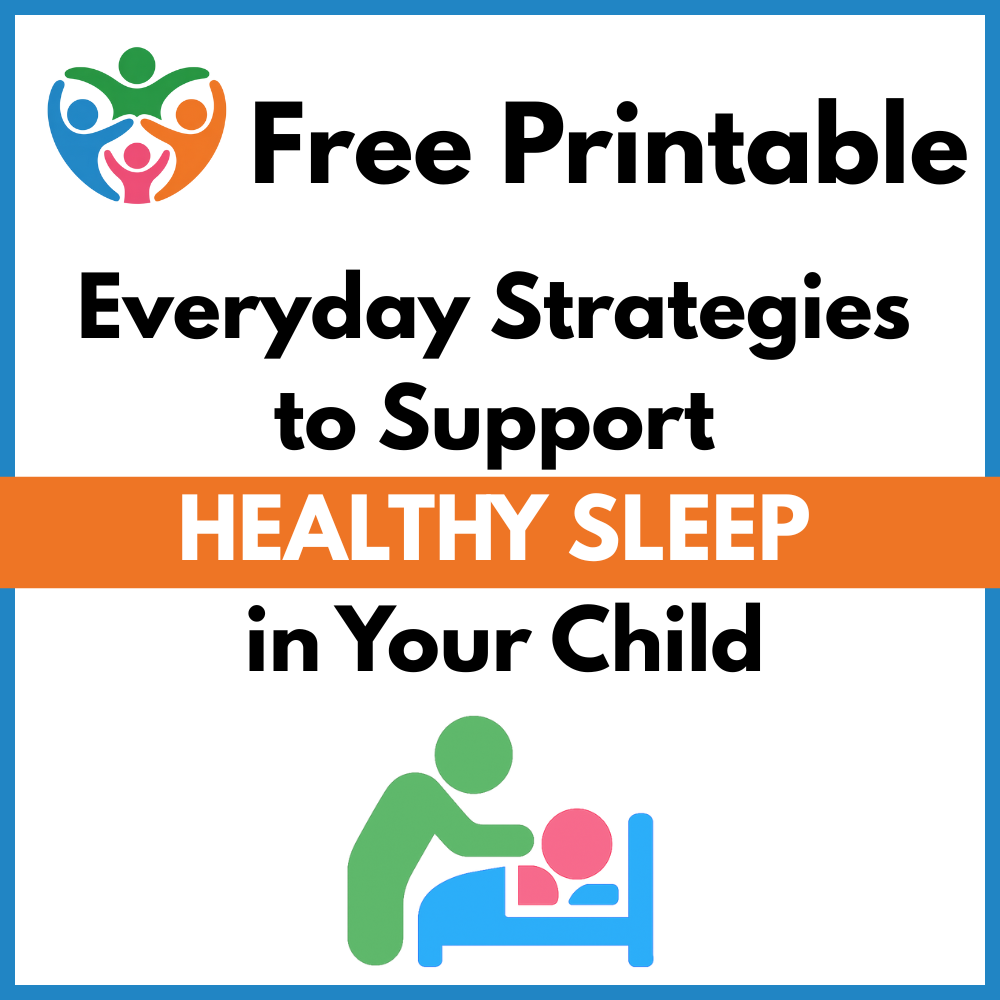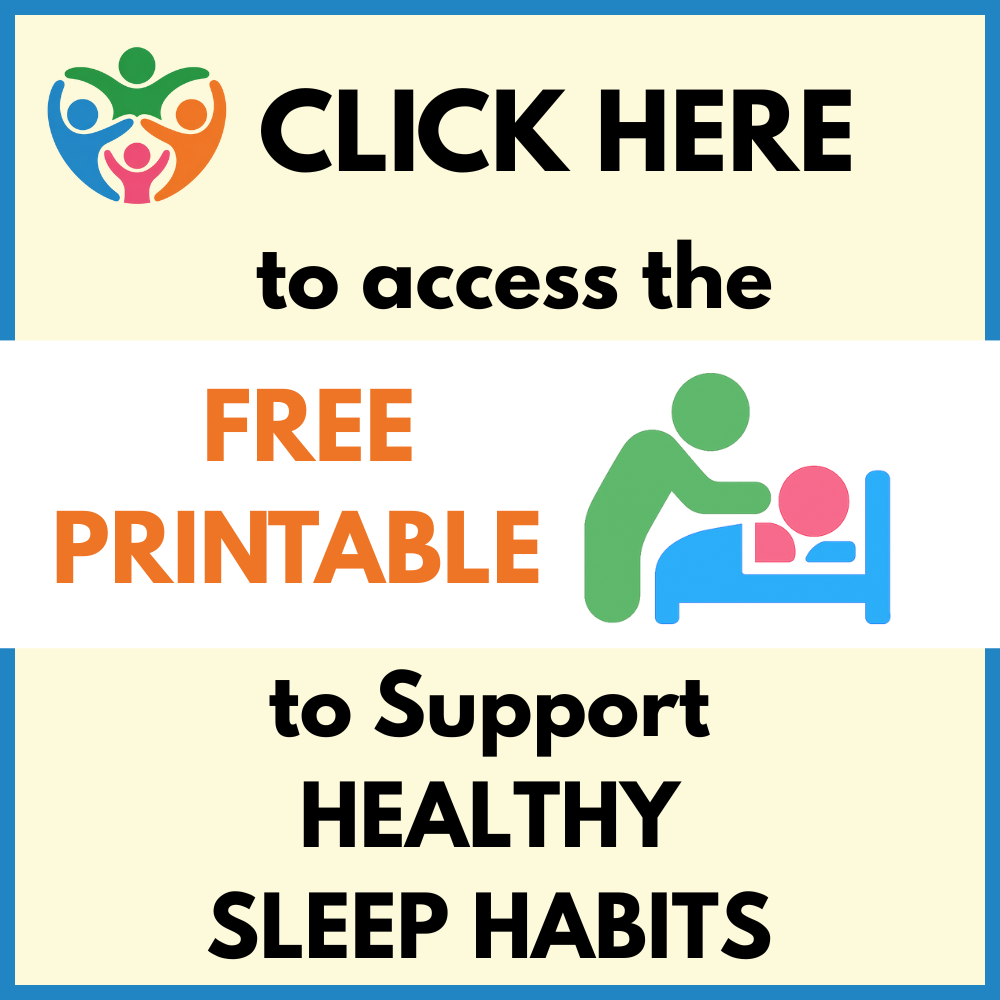
Sleep isn’t just a nighttime battle or a parenting milestone, it’s a foundational part of whole child development. When a child isn’t getting enough sleep, we often see challenges across the board: in behavior, emotions, learning, and sensory regulation. That’s why sleep isn’t a separate issue. It’s actually a huge part of the whole picture in child development.
In this post, we’ll explore:
- How much sleep kids really need
- Why sleep impacts emotional and physical development
- What you can do today to build healthy sleep routines
- How Whole Child Guide can help families struggling with sleep
Why Sleep Matters for Whole Child Development
We know that sleep supports learning, behavior, emotions, and physical health. These are all pillars of development. When kids don’t get enough rest, it can affect:
- Emotional regulation (leading to meltdowns or anxiety)
- Attention and focus (especially in school settings)
- Motor coordination (important for play and independence)
- Sensory processing (everything feels “too much” when overtired)
Sleep is one of the simplest yet most powerful tools we have to support the whole child! So what do we do when we know that our kids aren’t getting a great night’s sleep? Or what if there are other issues impacting sleep? That’s when things aren’t so simple and we might need to seek out a professional or a sleep specialist to help.
How Much Sleep Do Kids Need?
Sleep needs vary by age, but here’s a general guide:
- Infants (4–12 months): 12–16 hours per 24 hours (including naps)
- Toddlers (1–2 years): 11–14 hours
- Preschoolers (3–5 years): 10–13 hours
- School-aged kids (6–12 years): 9–12 hours
- Teens (13–18 years): 8–10 hours
Many kids are falling short, especially with screen exposure, inconsistent routines, or sensory sensitivities that make rest difficult.
3 Simple Ways to Support Sleep Through Everyday Routines
These strategies fit naturally into family life and can support sleep readiness:
1. Create a Predictable Bedtime Routine
Doing the same few calming activities every night tells the brain it’s time to sleep. Try something like: Bath then story time then bed.
Use visual schedules for kids who need extra support understanding what’s next.
2. Make the Bedroom a Sensory-Friendly Space
Consider your child’s sensory preferences.
- Soft lighting or a dim night light
- Weighted blanket or body pillow for deep pressure
- White noise or calming music
- A small “bed tent” for kids who feel secure in cozy spaces
3. Limit Screens in the Evening
Screens can delay melatonin production, making it harder to fall asleep.
Try setting a family rule: no screens 1 hour before bedtime. Swap screen time for sensory play, movement breaks, or quiet books to wind down.
Whole Child Guide: Helping Families Sleep Better
If your child is struggling with sleep, you’re not alone. Sometimes, more than routines are needed. Maybe your family would benefit from:
- A parenting coach who specializes in sleep routines
- A visual schedule creator who offers ready-made tools. There are MANY of these online printables found on the internet.
- A sensory-informed therapist who understands the connection between sensory processing and nighttime challenges
At Whole Child Guide, our mission is to connect families with professionals who support the whole child, including experts in sleep and family routines. We’re building a national directory where you can search for support based on your child’s needs, not just your ZIP code.
More Resources to Help
You’ll find a free printable with this post that includes bedtime routine visuals and sensory-friendly tips you can try tonight. And if you’re a professional who supports sleep through coaching, occupational therapy, or family counseling, we invite you to list your business on Whole Child Guide to reach the families searching for your services.
Are You a Professional Who Supports the Whole Child?
Join the Whole Child Guide Membership for professionals and get:
✅ Unlimited access to all our printables — organized for easy use in therapy, education, and parent support
✅ A high-visibility listing in our Business Directory — where families search based on their child’s needs
✅ Access to Downloadable Business Growth Workbooks to grow the impact of your practice
✅ The WCG Business Builder Tool to help you reach aligned families and grow sustainably
✅ All for just $49/year — a marketing write-off that works smarter, not harder
Join Whole Child Guide for Professionals
Together, let’s connect more families with the care they need.



